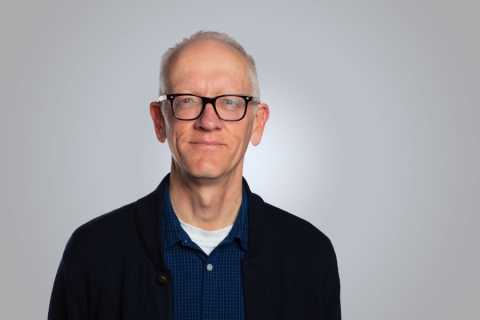Arts Advocates: Jeffrey Barrett
ARTFUL SCIENTIST
Q&A with Professor Jeffrey Barrett
Jeffrey Barrett is a Chancellor’s Professor of Logic and Philosophy of Science at UC Irvine and a member of the American Academy of Arts and Sciences. In addition to his research in the conceptual foundations of physics and game theory, Barrett is a champion of the arts. He serves as lead scientific advisor for Future Tense: Art, Complexity, and Uncertainty open at the Beall Center for Art + Technology this fall.
Q. Can you share a bit about your background and what led you to specialize in the philosophy of science?
JB: In college, I wanted to study physics because physical theories explained how the world worked. My emphasis shifted when I realized that we don’t really understand how the world works. Even our best physical theories are approximate. For example, since the standard theory of quantum mechanics entails a logical contradiction, we know it is false, but we still want to say it’s approximately true. So how can we get rid of the logical contradiction while keeping its successful predictions? This is fun to think about.
Q. What interests you about the intersection of arts and science?
JB: There is a tension between order and randomness that is involved in both science and art. On the science side, we try to impose order on the world by discovering the laws that govern it. But one of the things we have discovered is that the world is also fundamentally random. Art involves both of these features as well. Artists create new ways of understanding things we take for granted. The creation of something new involves an element of randomness, but it is also an ordered activity. Art is most interesting when it is both creative and there’s something behind it, something that structures or motivates it. Science involves creativity as well but with the target of explaining the world.
Q. How does art impact your own scientific research?
JB: Art reminds me that my best understanding of the world is always provisional and that I’m going to have to revise and reinterpret. It reminds me that the world is complicated. We like to believe we have our heads around things, we understand how the world works and we’ve mastered it, but art reminds us that our best understanding is created, and there is always more to learn.
Q. How do the arts impact your life personally?
JB: The arts are essential. I think the world would be uninteresting without them. But they also spark the imagination. When I go to a museum, I often find myself sitting down and taking notes that have nothing to do with what’s directly there. Invariably, when I interact with art, I come away with new ideas. I can’t put my finger on where they come from. I don’t know how it works.
Q. How can the art presented in Future Tense help us understand concepts like complexity science?
JB: Some of the pieces that the artists are working on are examples of complexity. Some of the works are dynamic, involving motion that can't be predicted. Others are studies in processes like evolution that involve both random elements and the creation of order out of randomness. There are things both to learn from the content of art and also the work itself is an example of the complexity of the world. These are incredibly creative pieces, and I am really excited.
Q. Why do you feel it's important for artists and scientists to collaborate?
JB: We learn from each other. We're both interacting with the world and trying to reach some understanding of it. We're both involved in a creative activity and can take inspiration from each other's work.
To learn more about ways to support CTSA, contact Sarah Strozza, Senior Director of Development, at 949-824-0629 or [email protected].
Please visit our secure direct giving page and make a gift to support CTSA today!

